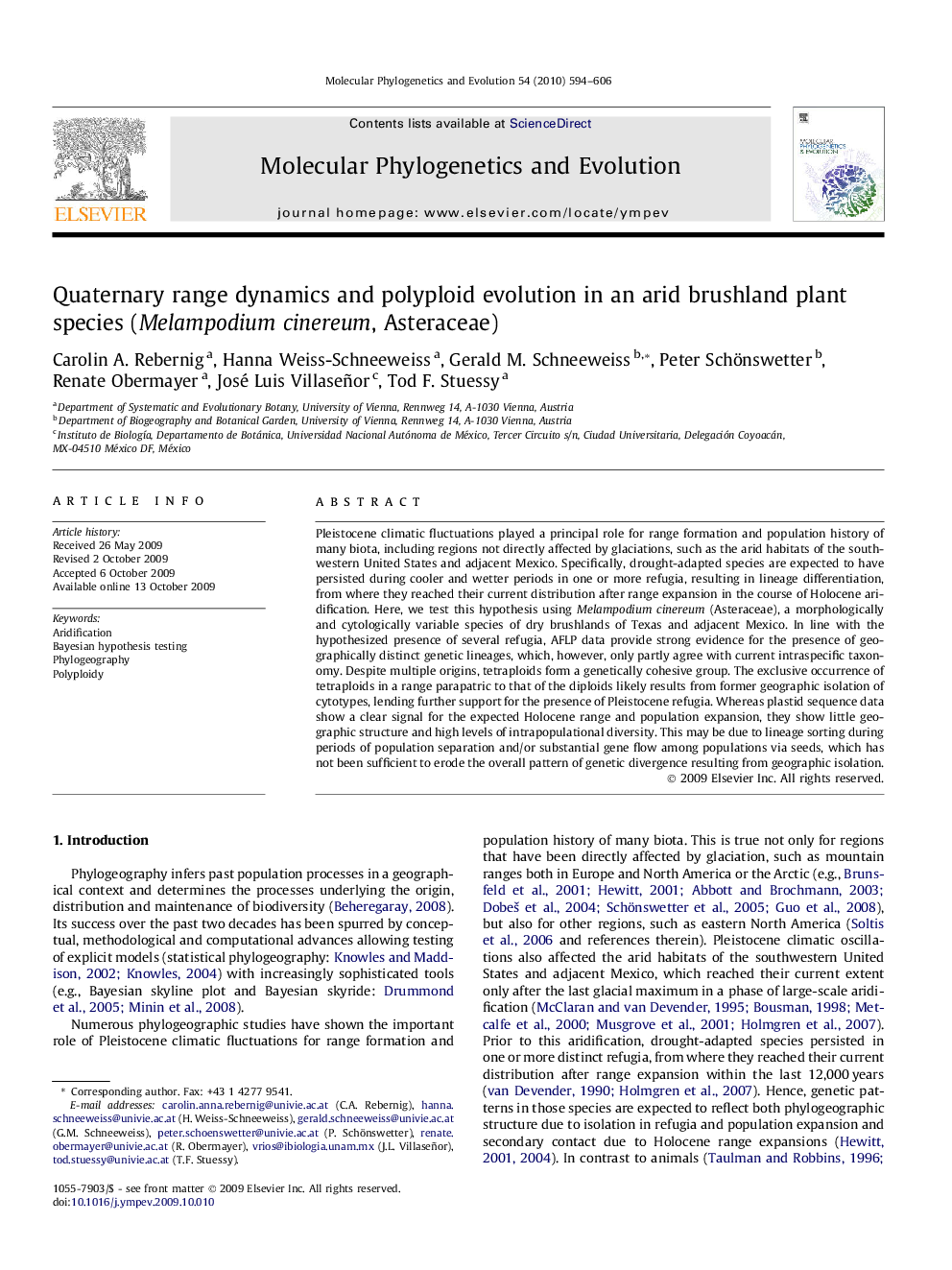| Article ID | Journal | Published Year | Pages | File Type |
|---|---|---|---|---|
| 2834642 | Molecular Phylogenetics and Evolution | 2010 | 13 Pages |
Pleistocene climatic fluctuations played a principal role for range formation and population history of many biota, including regions not directly affected by glaciations, such as the arid habitats of the southwestern United States and adjacent Mexico. Specifically, drought-adapted species are expected to have persisted during cooler and wetter periods in one or more refugia, resulting in lineage differentiation, from where they reached their current distribution after range expansion in the course of Holocene aridification. Here, we test this hypothesis using Melampodium cinereum (Asteraceae), a morphologically and cytologically variable species of dry brushlands of Texas and adjacent Mexico. In line with the hypothesized presence of several refugia, AFLP data provide strong evidence for the presence of geographically distinct genetic lineages, which, however, only partly agree with current intraspecific taxonomy. Despite multiple origins, tetraploids form a genetically cohesive group. The exclusive occurrence of tetraploids in a range parapatric to that of the diploids likely results from former geographic isolation of cytotypes, lending further support for the presence of Pleistocene refugia. Whereas plastid sequence data show a clear signal for the expected Holocene range and population expansion, they show little geographic structure and high levels of intrapopulational diversity. This may be due to lineage sorting during periods of population separation and/or substantial gene flow among populations via seeds, which has not been sufficient to erode the overall pattern of genetic divergence resulting from geographic isolation.
